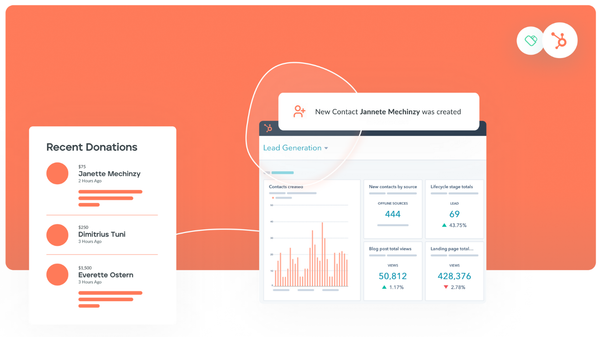How to Start a Nonprofit: Essential Steps and Tips
Ready to launch your nonprofit? Explore key tips from planning to legal steps, and get the insights you need to turn your vision into reality! Start your journey today!

Starting a nonprofit can seem like a challenging path. Limited funds, legal rules, and paperwork might make you hesitate. But don’t let these hurdles stop you from pursuing your dream. Every successful mission-driven organization started with someone like you – someone who saw a need and decided to learn how to start a nonprofit. This guide will help you navigate the journey.
How to Create a Nonprofit Organization in 7 Steps
If you’re wondering how to start a nonprofit organization, the first thing you need to know is the right steps to take. It doesn’t have to be complicated. Let’s walk through them together and set you up for success.
1. Define Your Mission
Your mission is the foundation of how to start a nonprofit. It’s why you exist and what you want to achieve. Research similar organizations in your area. Knowing how your mission is different or similar to theirs will help you find your niche and attract donors.
Then, write a mission statement that's clear, concise, and compelling. It should explain what you do, who you serve, and why it matters. Consider creating a vision statement, too. This is an aspirational and inspiring statement that describes the long-term change you want to see in the world.
2. Choose Your Name
Your nonprofit’s name is often the first thing people learn about you. It represents you to the world, so choose a name that reflects your mission and resonates with your audience. Think about how the name will look on logos, websites, and social media. Short, memorable names that are easy to say and spell often work best.
You’ll also need to check if your desired name is available. Search your Secretary of State’s business entity database and the U.S. Patent and Trademark Office’s trademark database. Choosing a unique name can help you avoid legal issues.
3. Define the Structure of Your Nonprofit
Deciding on your nonprofit’s structure affects how your organization operates and is governed. Most nonprofits choose to become 501(c)(3) public benefit corporations, which offer liability protection for directors and members and get tax-exempt status.
There are also other options, like not-for-profit structures and charitable trusts. The main differences between nonprofits and not-for-profits involve the tax and incorporation status. Trusts are used to manage assets for charitable purposes.
4. Build Your Board of Directors
Your board of directors guides your nonprofit’s strategy with an eye on your overall mission. A board is key to your success – and the IRS requires you to have at least three board members to gain tax-exempt status (you should also check with your state, which may require more than three board members).
To build your board, look for people with diverse skills, experiences, and networks. Include individuals passionate about your cause and others with nonprofit experience.
Put expectations for board members in writing, like meeting attendance, fundraising responsibilities, and term lengths. And be sure to keep records of your meetings and other communications.
5. Incorporate as a Business
Before you can get 501(c)(3) status, you’ll need to file articles of incorporation with the Secretary of State where you want to register. Each state has different requirements, so check on the specific forms and fees. You’ll likely have to include your nonprofit’s name, purpose, registered agent, and initial board of directors in your paperwork.
Incorporating your nonprofit creates a legal entity separate from yourself, which protects you personally from responsibility for any legal issues your organization may run into. Once approved, you’ll receive a certificate of incorporation. Keep this in a safe place – you’ll need it for future filings and applications.
6. Register Your Nonprofit
Now you’re ready to truly get into how to become a nonprofit. To apply for 501(c)(3) status, you’ll need to file Form 1023 with the IRS. It’s a detailed application, so you might want to get help. The good news is that there are plenty of resources online, including an official IRS website for Form 1023. You can also look for free or discounted law clinics in your area. And, if you chose board members with nonprofit experience, they might be able to help.
You’ll also need to get an Employer Identification Number (EIN) from the IRS to use for tax filings, bank accounts, and hiring employees. You can apply for free on the IRS website. Your state might also require you to register as a nonprofit before you can accept donations, so check your local requirements.
7. Start Fundraising
Of course, the main reason you want to learn how to start a charity foundation is so that you can contribute to a good cause. Once you’re incorporated and registered as a nonprofit, you can start fundraising! Begin with a strong case for support. Clearly explain why your work matters and how donations will make a difference. Use stories and data to make your case compelling.
Start by researching potential grants that are aligned with your mission, and carefully follow their application guidelines. Fundraising events are another good place to start – they engage the community and raise awareness for your new nonprofit. Finally, you’ll want to create an individual giving program, which might include mailing letters, sending donation emails, or online fundraising.
Top Tips for Starting a Nonprofit Organization
There’s more to the question “How do you start a nonprofit organization?” than just following prescribed steps. To be successful, follow these tips.
Start Small and Grow Strategically
Many successful nonprofits start with just a few dedicated people and a big dream. Don’t feel pressured to launch with a full staff and massive programs. Begin with a focus on one core program or service, lean on volunteers, and perfect your strategy before you expand.
Build Partnerships Early
No nonprofit can solve complex social issues alone. Look for opportunities to collaborate with other organizations in your community. Reach out to established nonprofits, businesses, and government agencies, and join local nonprofit associations. These groups offer resources, training, and networking opportunities for new nonprofits.
Focus on Impact Measurement
From day one, think about how you’ll measure your nonprofit’s impact. Funders and supporters want to see concrete results. Develop clear, measurable goals for your programs and collect data to back them up. You can even use a fundraising thermometer on your campaign pages to help drive donations.
Prioritize Financial Management
Learning how to start a nonprofit is all about strong financial management. Don’t let this intimidate you – start with good habits from the beginning. First, set up a separate bank account for your nonprofit as soon as you have your EIN. Never mix personal and organizational funds. Next, create a budget and monitor your income and expenses closely. Nonprofit software can make this easier.
Embrace Digital Tools
Digital tools can boost awareness of your organization – and boost donations. Start with a user-friendly fundraising website that clearly explains your mission and how people can get involved. Many affordable platforms, like Donately, make virtual fundraising easy. And don’t forget to use social media to engage supporters and share your impact.
Don’t Try to Do Everything Yourself
Many founders start off asking, “Can I start a nonprofit by myself?” You can, but it’s usually a good idea to have some help. Founder burnout is a real risk in the nonprofit world. Delegating tasks to board members, volunteers, or other staff can help you get more done and avoid burnout. You can also save some of your budget to work with lawyers, accountants, or consultants when needed.
How Much Does It Cost to Start a Nonprofit?
The cost of starting a nonprofit varies widely depending on your location and approach. State filing fees can range from $50 to $500. The filing fee for IRS Form 1023 is $600. Professional help with incorporation and IRS forms can add $1,000 to $5,000.
Wondering how to start a nonprofit organization with no money? You can always fundraise before you file your paperwork. Just be sure to let donors know that you’re not yet an official 501(c)(3), so their donations aren’t tax-deductible.
How to Set Up a Nonprofit Website: Start with Donately
Now that you know the answer to “How do I start a nonprofit organization?,” it’s time to make your dreams a reality. One of the first things you should do is set up a fundraising website. Online fundraising is one of the best ways to collect donations and build awareness for your cause. And Donately is one of the best partners to help you learn how to start a nonprofit fundraising website.
With custom donation forms and pages, plus peer-to-peer fundraising pages and donor insights, Donately has everything you need to start fundraising. Sign up for free today and take a look around.





